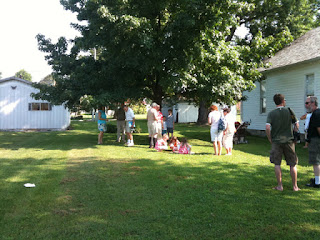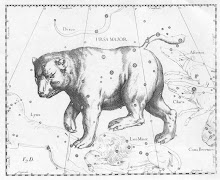As I write this, we are well into a very special time of the
calendar, one that celebrates lights that remind us of what we strive to
be. A wick that burns though the
oil has run out. A fire on
the darkest, longest night. A star
that shines brightly above. Even
the space geek can take comfort in such images, and plan for the coming year.
I want to thank the INSGC staff and affiliates for bringing
us to a place of light over the past year. Yes, there are definitely new anxieties surrounding our
funding for next year, and that is really the point of these Directors’
Notes. When we first moved to
Designated status in 2005, there was an influx of funding, and a range of
unexpected new challenges. Despite
the challenges, we have definitely shown through these past years, in ways that
make our current situation a bittersweet interplay of darkness and light.
Those of you who remember our Affiliates Meetings between
2003 and 2005 will recall, though others may find this improbable: at one point, we feared having too few
affiliates to manage a rich and vibrant portfolio of higher education, K-12,
and general public activities. Fortunately,
we developed a process, even then, that allowed us to consider how we would add
new affiliates, and when we’d say, “enough”. This month, however, we are processing a request that would
bring us to 27 affiliates—including a significant fraction of all outreach
affiliates in the national Space Grant network. This is a glorious riot of illumination across the state…
but from a Director’s standpoint, a delicious burden. More affiliates than ever before in the history of INSGC,
but budgets that are flat at best.
More academic affiliates to provide supplemental support, and more
competition to select a diversity of campuses and cultures and disciplines for
undergraduate scholarships. It’s
at this point that I can say with confidence that we celebrate our current
affiliates, and welcome those currently under consideration… but to maintain
the quality of our light, we no longer seek to add quantity of affiliates.
A few years ago, INSGC implemented a process of Consortium
Priorities, in an attempt to ensure that we could meet and exceed NASA
expectations for Space Grant each year, while supporting a rich competition and
cultivation of new ideas and affiliate contexts. During 2010-11, we experienced the last bright year of
funding exceeding Priority demands.
We were able to identify and manage the old model of priorities then,
but the new Base + Augmentation model from NASA Headquarters does not permit
that model to continue as we designed it previous. It’s curious how something novel can become traditional and
expected in just a few years (“well, of course we’ll burn that log tomorrow
night!” for a habit that just started within the memory of all but the youngest
members of a family), and painful when the tradition changes. As you read through the funding levels
and focus areas for the 2012-13 INSGC award programs, you’ll notice some
changes. Smaller award
levels. We’re requesting
additional elements of budget detail in the proposals. This is not because we love bureaucracy
in the INSGC Office. It is because
new winds and potential storms blow in the East, and I am determined to have
INSGC navigate these storms well and with beauty. We will maintain our commitment to serve our citizens well,
and to be a spark for STEM education—Space Grant is STEM.
Despite what looks like danger and darkness, I have never
been more proud or confident of how INSGC is poised, and where we will be able
to shine in the future. We’ve
ridden the candle of STS-135, a student spaceflight experiment on the final
space shuttle flight. We’ve
celebrated our first guiding navigators: Gus Grissom and his pioneering flight
50 years ago, and took our turn to celebrate the memory of Yuri Gagarin’s
flight that is now an international party. We’re linking Education and Engineering, kids and
kinematics, imagination and implementation.
Even our State Seal and our INSGC logo celebrate light:
stars and a torch flame. It’s what
we do, to burn brightly, and to shine into the distance.
Blessed Holidays to all.









